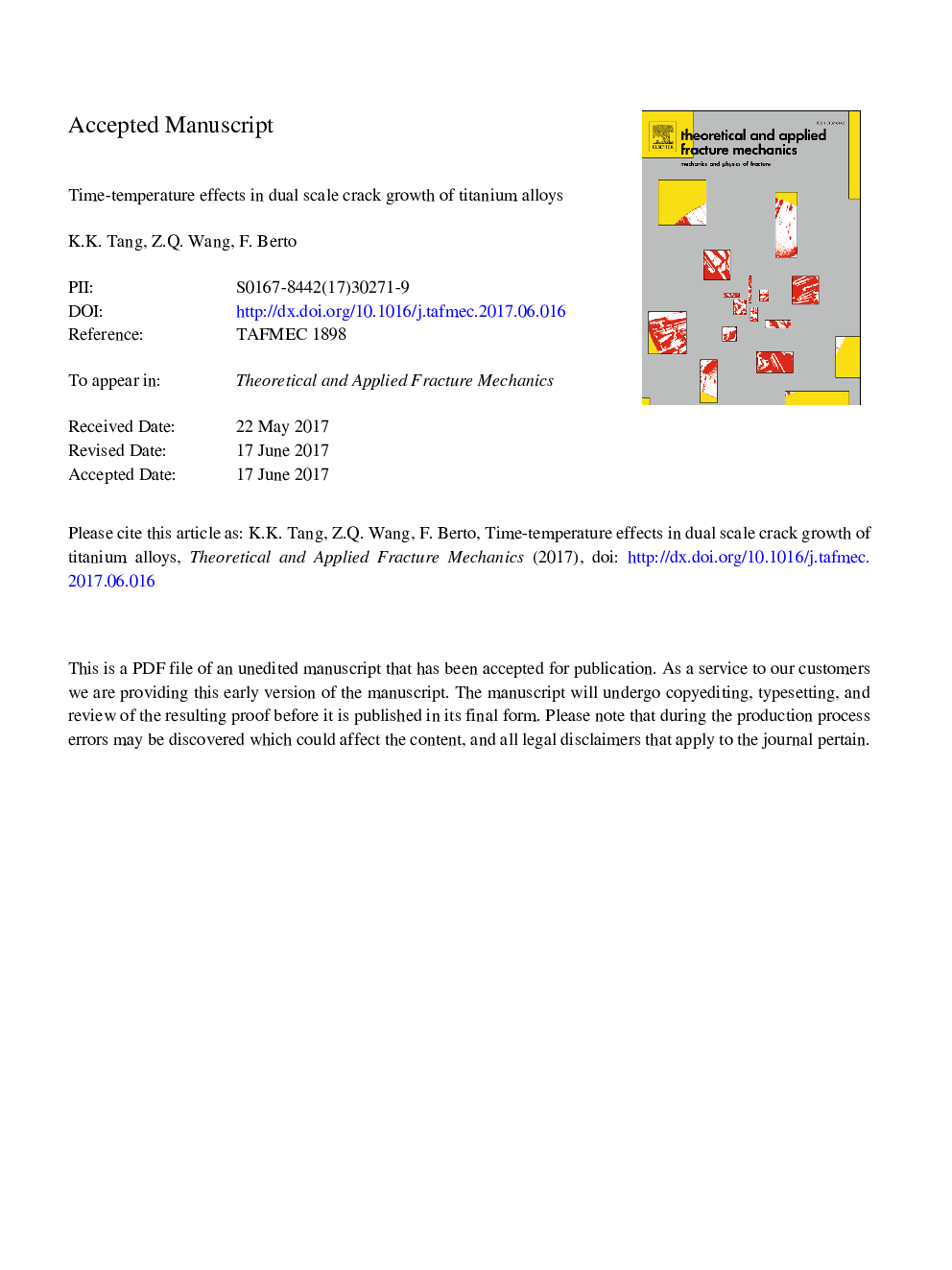| Article ID | Journal | Published Year | Pages | File Type |
|---|---|---|---|---|
| 11004110 | Theoretical and Applied Fracture Mechanics | 2018 | 32 Pages |
Abstract
Time and temperature effects play substantial role in the microstructural degradation of metal materials. There results in complex creep-fatigue interaction. The explicit representation of material damage is preferably assumed to be a characteristic length such as an equivalent crack length. A dual scale crack growth model that is based on the theory of strain energy density is employed to study the time-temperature effects on the crack growth behaviors of titanium alloys. Three micro/macro parameters defined in the model are used to exhibit the time-dependent variation of material, loading and geometry effects. TA7 and TA19 of titanium alloys are used to particularly address the effects of temperature variation as well as scale parameters. The numerical results show the microscopic Poisson's ratio is sensitive to the crack growth history of titanium alloys. The inverse approach of creep-fatigue cracking can be possibly applied to the health monitoring of crack growth in fracture control.
Related Topics
Physical Sciences and Engineering
Engineering
Mechanical Engineering
Authors
K.K. Tang, Z.Q. Wang, F. Berto,
